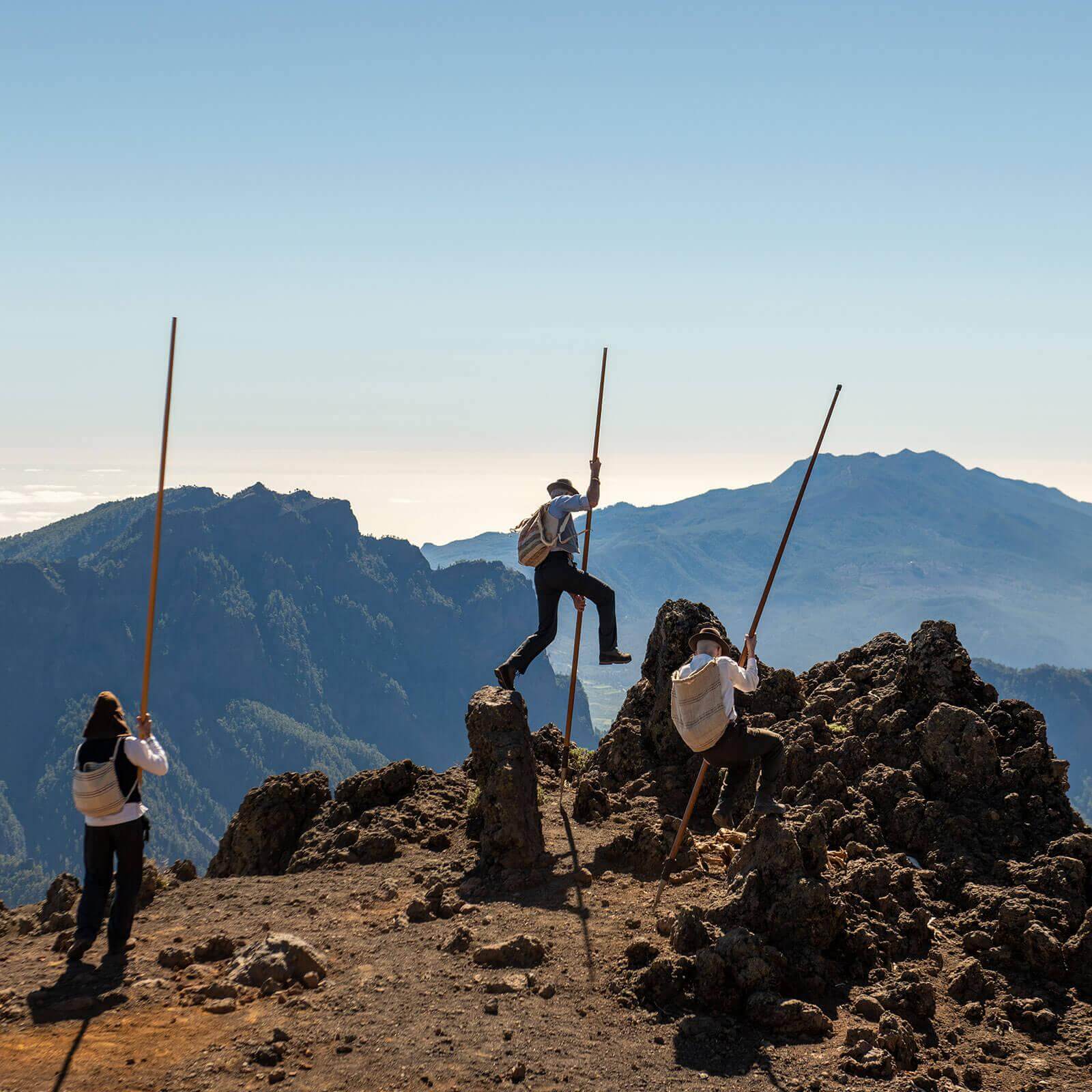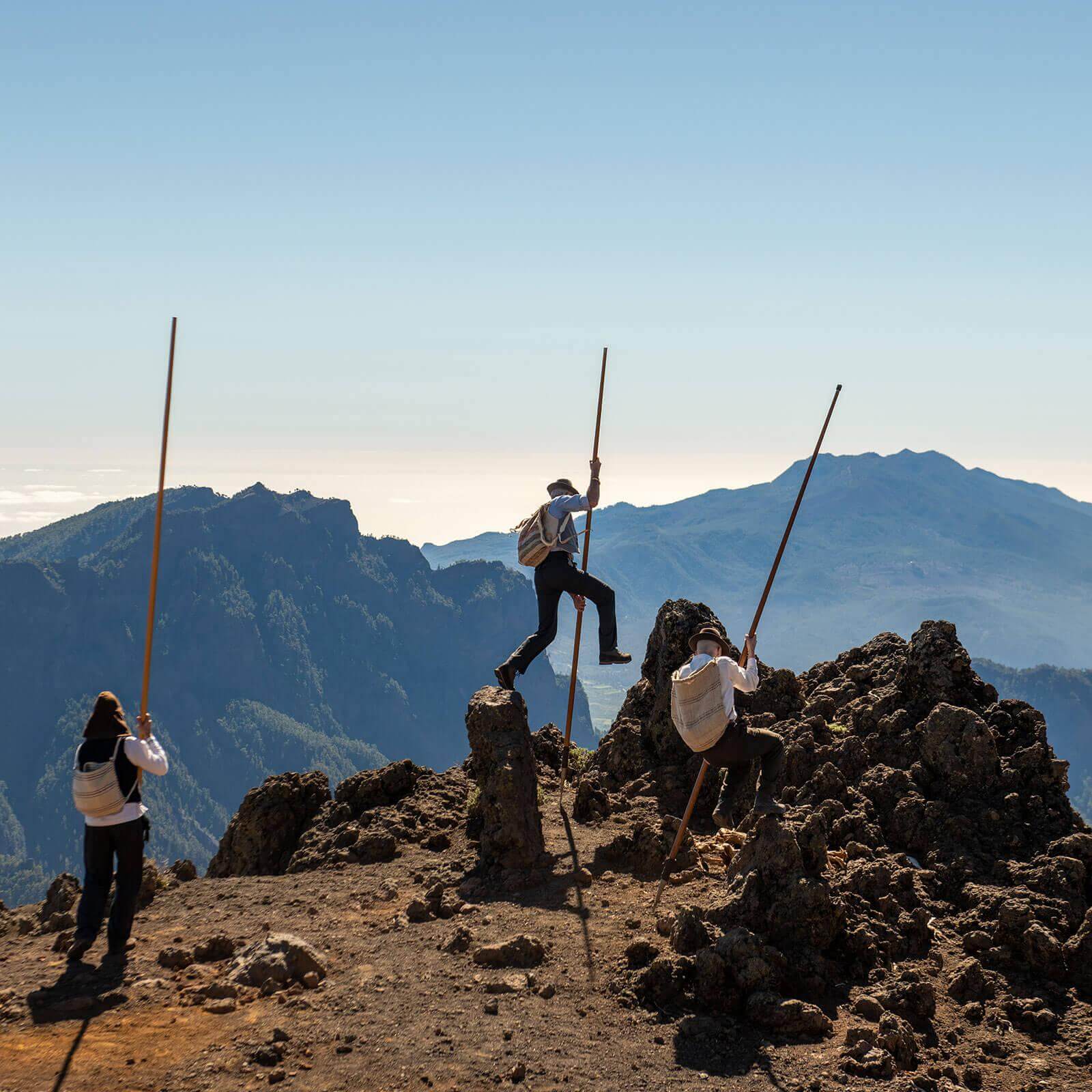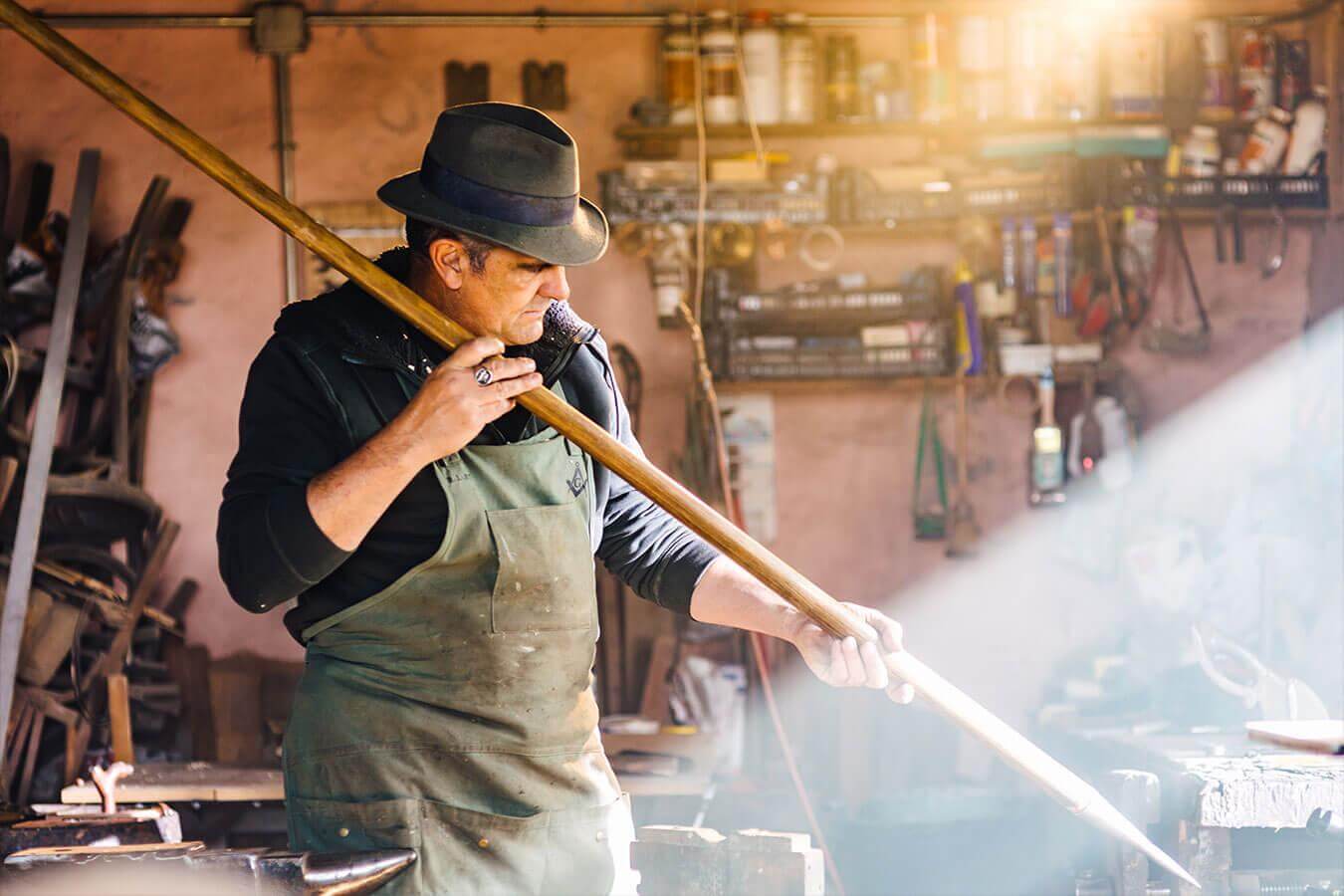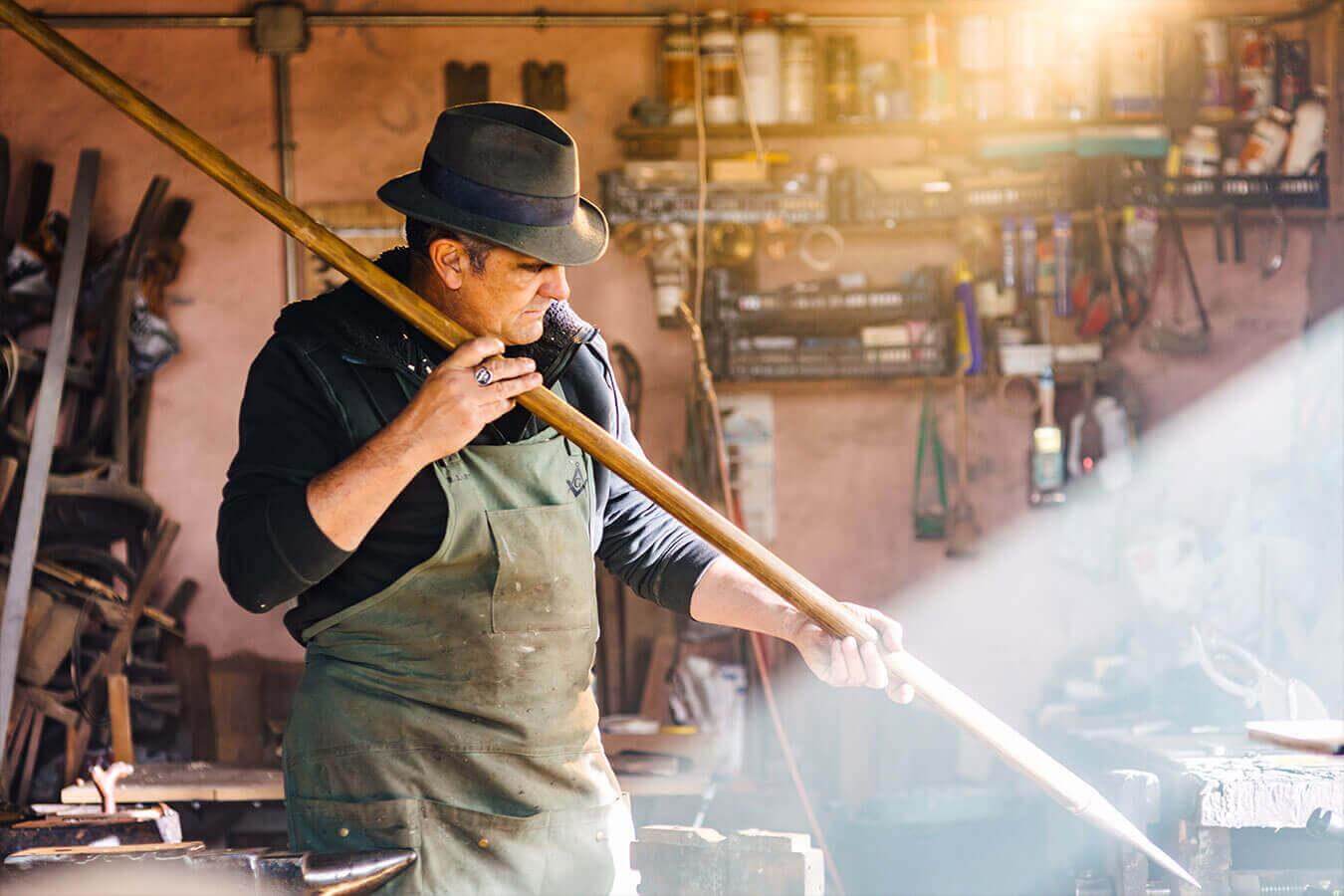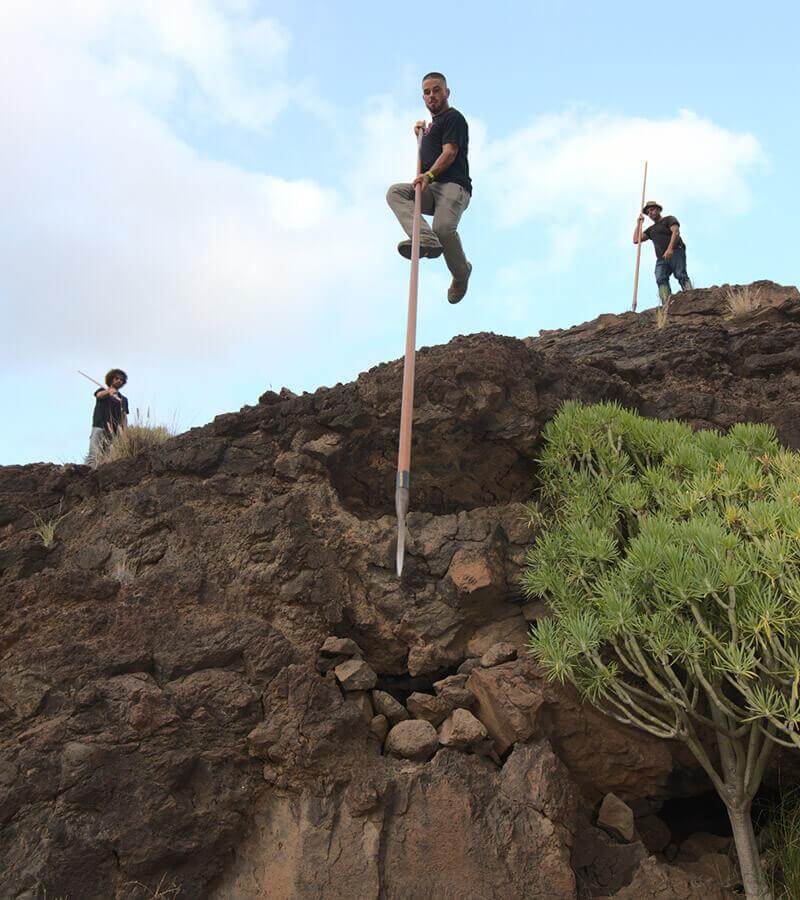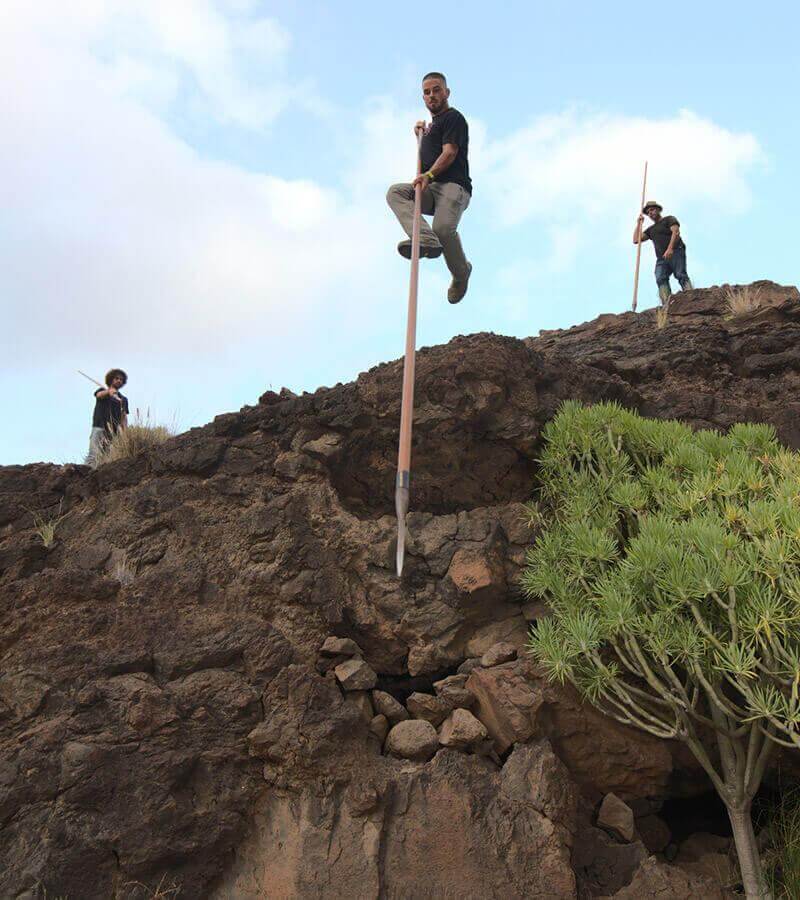The salto del pastor, or shepherd’s leap, is a technique that is unique in the world, declared an Asset of Cultural Interest by the Government of the Canary Islands. This sporting skill goes back to the first inhabitants of the archipelago. It was they who started practising it in order to move swiftly over abrupt terrain with the help of a long wooden pole. Nowadays many shepherds still use this method, but there are also groups who practise it as a form of recreation.
A vital tool for shepherds
The indigenous society of Canary Islands kept livestock, fostering good husbandry. With the help of a pole between 2 and 4 metres long, shepherds could travel over high mountains and cross deep ravines keeping pace with their goats.
This skill surprised many of the conquistadors and their chroniclers. In the 19th century, when the archipelago began to turn into a tourist destination and travel literature became fashionable in Europe, many mentions were made of the extraordinary traditions of the Canary Islands.
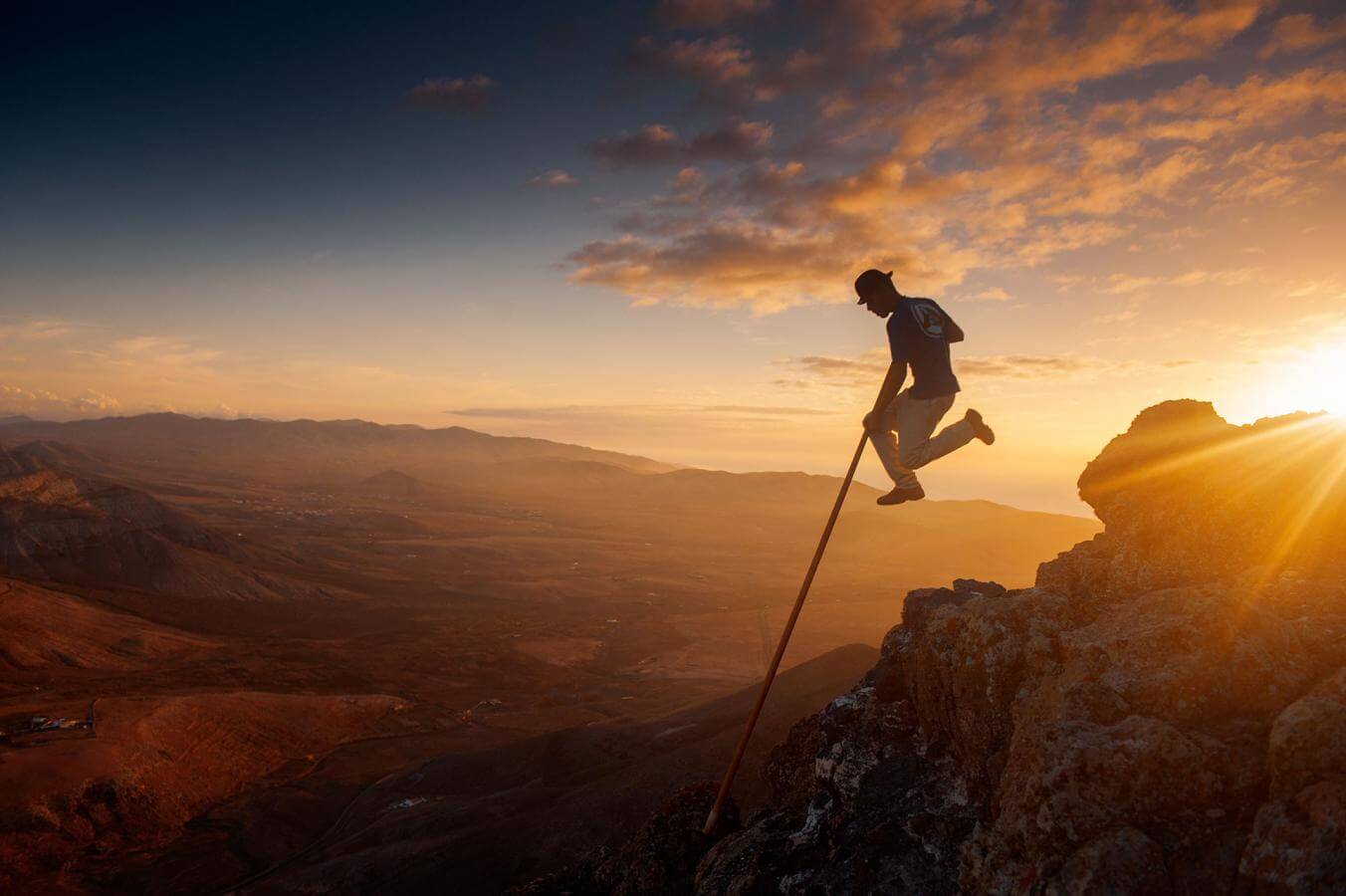
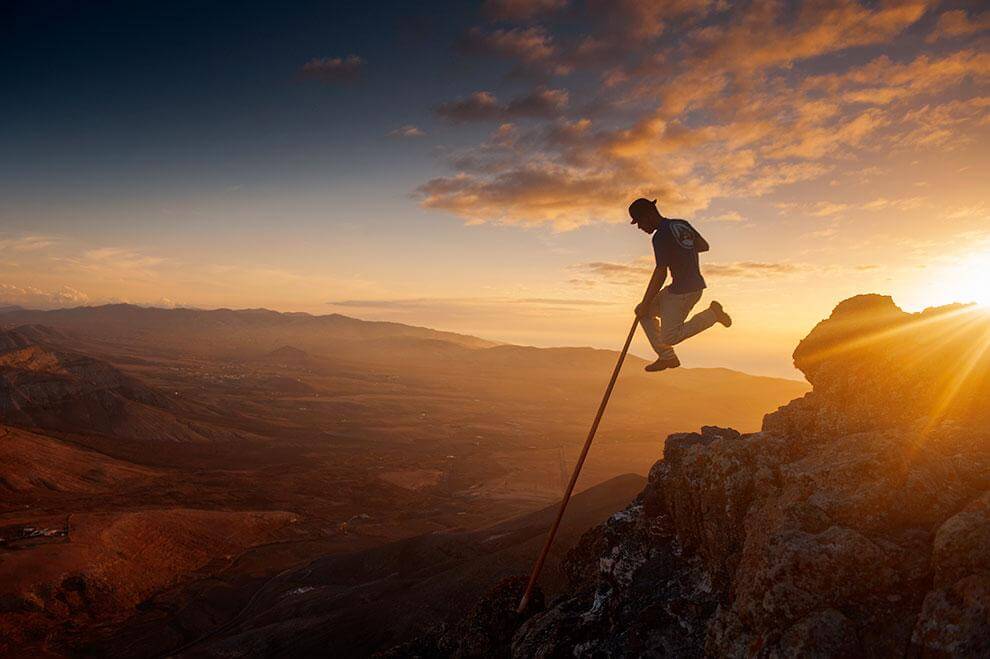

Captivating other cultures with the archipelago’s traditions
Many European travellers’ tales spoke of the shepherd’s leap. When the Englishman Charles Edwardes witnessed the practice in 1888, he said: “the peasant always carries his lanza, a long wooden pole, spiked at the end... to descend to the bottom of the abysses of the islands, as in La Palma, one of the more mountainous and abrupt islands”.
This practice also surprised the writer Olivia Stone, the author of the most renowned travel book on the Canary Islands of the era. She highlighted the fact that the technique used by the shepherds to leap over the rocks with a pole would be impossible for anyone under normal circumstances.
Stick or pole? This is what this shepherd’s utensil is called
The shepherd’s leap is a technique used on several islands, but perhaps the most curious thing is that on each one, the stick is given a different name. These are the names gathered in the report declaring the practice an Asset of Cultural Interest: “lanza” in La Palma, “astia” in El Hierro, “asta” in La Gomera, lanza, “palo” or “regatón” in Tenerife, “garrote” in Gran Canaria and “lata” in Fuerteventura and Lanzarote. Another peculiarity is that the most frequently-used wood is that of the Canary Island pine, and the length of the pole varies depending how steep each island is.
A sharpened metal tip is added to the end of the pole so that it gains better purchase on the ground. The incorporation of metal is relatively new, however, as the indigenous people used a piece of bone.
Leaping in pure Canarian style
The shepherd’s leap was common practice for controlling livestock during grazing, but it also had a recreational side to it, when sporting and performative skills were put into practice. Competitions were organised to determine which shepherd was the best jumper, during games such as “pass the pole”, “make the flag” or “the shepherd’s turn”, or precision jumps like “the lover’s leap” or “the jump of the coin”. The most striking one is “the dead pole jump”, which consisted of allowing oneself to drop from heights of up to double the length of the pole without placing it on the ground when jumping. Nowadays, the groups that practise the shepherd’s leap as a recreational pastime are known as jurrias, and they are grouped together in the Federación de Salto del Pastor Canario (Canary Islands’ Shepherd’s Leap Federation).



